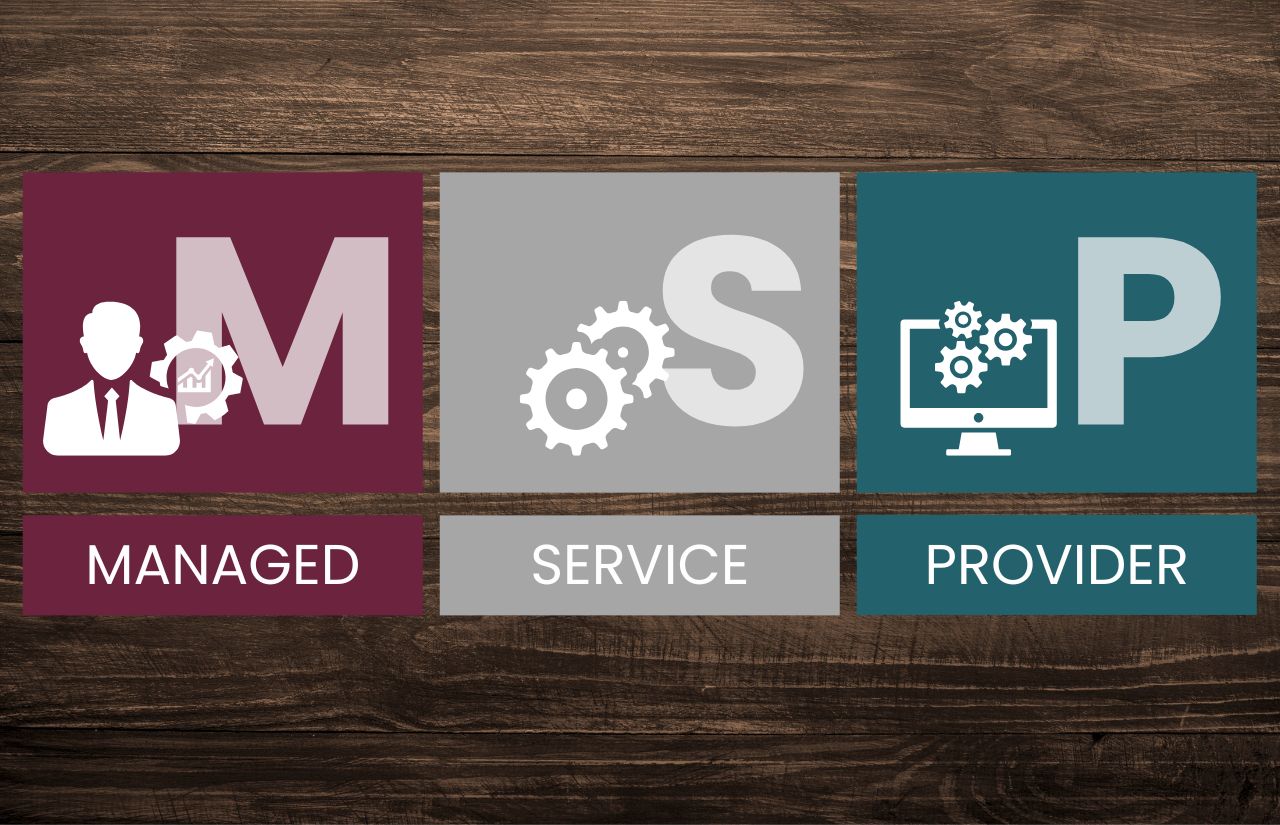In 2024, Managed Service Providers (MSPs) play a vital role in helping businesses maintain efficient, secure, and scalable IT environments. They are increasingly relied upon to provide proactive solutions that manage everything from cybersecurity threats to data compliance, enabling clients to focus on their core operations. Yet, MSPs also face mounting pressures due to the competitive market, talent shortages, and the evolving landscape of cyber threats and market demands. This article delves into the Top 5 MSP Challenges in 2024 and explores effective solutions for each challenge, providing a roadmap for MSPs to thrive in the face of uncertainty.
1. Finding and Retaining Skilled IT Professionals

A shortage of skilled IT professionals is one of the most pressing issues for MSPs in 2024. With the demand for IT services growing, MSPs struggle to attract and retain talent, particularly in cybersecurity, cloud computing, and data management. This workforce shortage impacts their ability to expand service offerings and maintain high-quality customer support.
Understanding the Talent Gap
Several factors contribute to this talent shortage:
- High Demand for Cybersecurity Experts: As cyber threats increase in sophistication, the need for cybersecurity professionals grows. However, finding and keeping professionals with the latest certifications and skills remains challenging.
- Competition from Big Tech: MSPs face competition from larger corporations offering higher salaries, benefits, and resources. Smaller MSPs may struggle to match these incentives, putting them at a disadvantage in hiring top talent.
- Specialized Knowledge Requirements: Clients expect MSPs to be well-versed in niche areas like AI and IoT, which require specialized training and experience.
Strategies to Attract and Retain Talent
To address the talent gap, MSPs can consider several strategies:
- Training and Upskilling: Many MSPs are investing in continuous learning opportunities for current staff, allowing them to develop new skills and take on more advanced roles. For example, offering training programs in cybersecurity, cloud computing, or AI can enable employees to meet client demands effectively.
- Creating a Supportive Work Culture: In a competitive job market, company culture can be a key differentiator. MSPs that foster inclusive, supportive work environments may be better positioned to attract and retain talent.
- Flexible Work Options: Remote work options can attract candidates looking for work-life balance, particularly as remote IT support becomes more common in MSP operations. Flexible hours, hybrid models, and remote options are highly desirable among IT professionals today.
Investing in these strategies not only helps retain staff but also builds loyalty and reduces turnover costs, allowing MSPs to allocate resources more effectively.
Read more: Microsoft Experts On-Demand
2. Cybersecurity Management and Threat Mitigation

Cybersecurity management is arguably one of the biggest, most complex challenges facing MSPs in 2024. As cyber threats continue to grow in frequency and sophistication, MSPs are responsible not only for safeguarding their own infrastructure but also for protecting sensitive data and systems on behalf of clients. This responsibility is heightened by the growing prevalence of complex cyber-attacks, evolving compliance regulations, and the ever-present risk of financial and reputational damage. Let’s take a closer look at the cybersecurity landscape MSPs face today and the strategies they can use to mitigate these threats.
Key Cybersecurity Challenges for MSPs
- The Evolving Cyber Threat LandscapeIn 2024, the cyber threat landscape has grown more complex with threats like ransomware, phishing, and advanced persistent threats (APTs) becoming more refined and targeted. Cybercriminals are developing novel tactics and leveraging sophisticated tools to infiltrate networks, with several trends defining the current threat environment:
Ransomware-as-a-Service (RaaS): Criminals can now access ransomware toolkits through subscription services, enabling even non-technical actors to deploy ransomware attacks. This ease of access has led to a surge in ransomware incidents across industries, with MSPs among the most frequently targeted.
Advanced Persistent Threats (APTs): APTs refer to prolonged, stealthy cyberattacks that focus on infiltrating systems and extracting data over extended periods. APT groups often target high-value assets within an organization, and their approach includes multiple phases, from initial reconnaissance to the eventual extraction of valuable data.
Phishing and Social Engineering: These tactics continue to evolve, with attackers using social engineering to manipulate users into sharing credentials or unknowingly installing malware. Phishing attacks are becoming increasingly personalized, using data harvested from social media to craft emails that appear highly credible.
Supply Chain Attacks: MSPs are at particular risk of supply chain attacks, where attackers compromise an MSP’s systems to access the broader network of client systems. Given MSPs’ role in managing multiple clients, such attacks can have devastating cascading effects, potentially breaching multiple companies from a single-entry point.
- Regulatory and Compliance PressuresMSPs are not only expected to fend off cyber threats but also must comply with stringent cybersecurity and data privacy regulations. Regulatory bodies, such as the California Consumer Privacy Act (CCPA), the Virginia Consumer Data Protection Act (VCDPA) and the Colorado Privacy Act (CPA), impose strict data protection requirements. Failure to comply can result in heavy fines, legal challenges, and reputational damage, so it is critical for MSPs to stay informed and proactive.
Data Privacy and Protection Regulations: Compliance with CCPA, VCDPA, CPA and HIPAA (Health Insurance Portability and Accountability Act) requires MSPs to protect client data rigorously. MSPs are responsible for implementing policies that ensure the secure handling, storage, and transfer of sensitive information.
Cybersecurity Frameworks: Adopting frameworks like the National Institute of Standards and Technology (NIST) Cybersecurity Framework or the ISO/IEC 27001 standard helps MSPs align with regulatory requirements and ensure comprehensive cybersecurity practices are in place.
By adhering to these frameworks, MSPs can enhance their ability to manage risk, detect intrusions, and prevent data loss—creating a secure environment for their clients and building trust.
Solutions for Effective Cybersecurity Management
- Implementing Proactive Cybersecurity StrategiesTo meet these challenges, MSPs must deploy proactive strategies that blend advanced technologies, best practices, and client education. Here are some effective methods:
Managed Detection and Response (MDR): MDR services are critical in enhancing cybersecurity for MSPs. Unlike traditional antivirus software, MDR uses AI-driven analysis to identify unusual patterns and detect threats in real-time. By continuously monitoring network traffic and system behaviors, MDR enables rapid detection and response, which is crucial for minimizing damage during an attack.
Zero Trust Architecture: The Zero Trust security model is increasingly essential for MSPs managing sensitive data. This model assumes that every network user, whether inside or outside the organization, is a potential threat. Zero Trust frameworks enforce strict access controls and require continuous verification of users and devices, which reduces the risk of insider threats and unauthorized access to sensitive areas of the network.
Security Information and Event Management (SIEM): SIEM tools consolidate logs and event data from across the network, enabling MSPs to monitor for unusual activity. By centralizing data, SIEM systems allow MSPs to quickly identify and respond to threats. Additionally, SIEM tools can generate reports that help with regulatory compliance by providing a comprehensive view of network activity.
Endpoint Detection and Response (EDR): EDR solutions detect threats at the device level, identifying anomalies that might signal an attack. These systems can isolate compromised devices, preventing lateral movement of the threat across the network and minimizing potential damage.
Employee Training and Client Education: Human error remains one of the primary causes of cyber incidents. Regular training for employees and clients on recognizing phishing attempts, practicing good password hygiene, and understanding security best practices is essential. MSPs can offer periodic workshops, webinars, and practical phishing simulations to reinforce these principles and build awareness among clients and their teams.
Dark Web Monitoring: By monitoring the dark web, MSPs can proactively detect stolen credentials, sensitive data, or insider threats. This early detection allows them to take preventive measures before these compromised credentials or information can be used maliciously.
- Leveraging Cybersecurity Automation and AIAutomation and AI are invaluable tools for MSPs as they confront the vast scale of today’s cybersecurity challenges.
Automated Threat Detection: AI-driven threat detection tools continuously scan the network for unusual activity, reducing manual work and allowing MSPs to respond to threats more rapidly. Machine learning algorithms can also learn from past incidents, enhancing their ability to detect emerging threats.
Incident Response Automation: Automated incident response can perform essential security tasks, such as isolating affected systems or logging out suspicious users, without requiring human intervention. This capability accelerates the response time, minimizing the impact of a breach.
Vulnerability Scanning and Patch Management: Automated vulnerability scanners assess systems for weak points and missing patches, while automated patch management tools can deploy updates across systems quickly and efficiently. This combination prevents many security issues from arising in the first place, strengthening the MSP’s and client’s overall security posture.
- Building a Comprehensive Cybersecurity OfferingIn an era where the cost of a data breach can be catastrophic, many clients look to MSPs to provide comprehensive security services. MSPs can differentiate themselves and add value by offering tailored cybersecurity packages that meet their clients’ unique needs. A multi-layered cybersecurity approach might include the following elements:
24/7 Network Monitoring: Around-the-clock monitoring ensures that threats are detected as soon as they arise, allowing for prompt action.
Penetration Testing: Regular penetration tests help identify vulnerabilities in the system that could be exploited by cybercriminals, allowing MSPs to address these weak points proactively.
Compliance Audits: Offering audits for industry-specific compliance helps MSPs attract clients in regulated industries who need to meet stringent requirements.
Disaster Recovery and Business Continuity: Cybersecurity breaches can lead to significant downtime. A robust disaster recovery plan includes data backups, recovery testing, and alternative systems to ensure business continuity if a breach occurs.
By providing these services, MSPs can offer end-to-end security solutions, strengthening client relationships and securing long-term partnerships.
- Client Trust and TransparencyGiven the sensitivity of data and the risk of cyber threats, building client trust is essential for MSPs. Transparency around security protocols, regular updates on cybersecurity practices, openness about incidents or vulnerabilities, and incorporating customer feedback are critical components of a trust-building strategy. When MSPs maintain transparency, they reassure clients that their data is secure and that they are protected by a provider who values their trust and security.
3. Technological Advancements in AI and Cloud Solutions

With AI and cloud technologies reshaping how businesses operate, MSPs must continually adapt to keep pace with these innovations. While these technologies present numerous opportunities for service optimization and growth, they also bring unique challenges, including the complexity of implementation, cost management, and meeting evolving customer expectations. By understanding these hurdles and adopting proactive solutions, MSPs can harness AI and cloud advancements to enhance their offerings and stay competitive.
Challenges MSPs Face with AI and Cloud Technology
- Complex Implementation and Integration: AI and cloud solutions offer immense value but can be difficult to integrate, particularly for MSPs managing hybrid or multi-cloud environments. Integrating AI capabilities often requires highly specialized skills that many MSPs may lack in-house. Managing these diverse environments efficiently, while ensuring security and data consistency, can be complex and time-consuming.
- Cost Management: Although cloud adoption often reduces upfront capital expenditures, operational expenses can increase if resource usage isn’t closely monitored. AI, meanwhile, can require high computational power, raising operational costs. For many MSPs, the costs of building, managing, and maintaining these systems can lead to unpredictable financial strain without clear strategies for cost control.
- Data Security and Compliance: AI and cloud solutions introduce additional security risks, including data breaches, unauthorized access, and potential data loss. MSPs also face the challenge of navigating compliance requirements across different regions which add layers of complexity to secure data management and storage.
- Client Expectations and Education: As AI and cloud technology evolve, clients expect faster and more personalized services but may not fully understand the limitations or costs associated with these technologies. Meeting these expectations requires clear communication and education, which can strain resources as MSPs balance client demands with realistic service capabilities.
Solutions for Navigating AI and Cloud Advancements
- Investing in Specialized Training and Partnerships: To bridge skill gaps in AI and cloud technologies, MSPs can invest in targeted training programs or partner with specialized providers. This approach allows them to develop in-house expertise or gain access to advanced capabilities without incurring the full cost of building these competencies from scratch. Strategic partnerships with cloud vendors, for instance, provide not only technical resources but also cost savings on infrastructure and additional support.
- Implementing Cost Management Tools: Effective cost management is critical to sustainable cloud use. MSPs can leverage cost management and monitoring tools, such as cloud cost calculators and usage tracking software, to help clients manage cloud expenses. By analyzing usage patterns and implementing automated scaling, MSPs can optimize resources to control costs without compromising service quality.
- Zero Trust and Enhanced Security Measures: A Zero Trust approach, which assumes that every user and device is a potential threat, is essential for securing cloud environments. MSPs can implement strict access controls, continuous monitoring, and identity verification to safeguard data across cloud platforms. In addition, adopting Security Information and Event Management (SIEM) and Endpoint Detection and Response (EDR) tools enhances security across complex environments, making it easier to detect and respond to threats in real time.
- Client Education and Clear Communication: Educating clients about the benefits, costs, and realistic applications of AI and cloud technology helps MSPs set clear expectations and build trust. MSPs can use client training sessions, webinars, and whitepapers to provide practical knowledge, enabling clients to make informed decisions that align with their business goals.
- Developing Scalable Service Models: MSPs can create scalable AI and cloud service offerings that meet clients’ varied needs. By offering tiered packages or customizable solutions, MSPs can accommodate clients with diverse budgets and requirements. Scalable models also allow MSPs to gradually expand their services, providing flexibility to adapt as client needs evolve.
4. Customer Acquisition and Relationship Management

Customer acquisition is another major challenge for MSPs, with market saturation and high competition making it harder to attract new clients. Many MSPs also find it difficult to differentiate themselves from competitors, particularly on price, as clients are often price-sensitive and may not fully appreciate the long-term value of MSP services. Implementing effective customer relationship management (CRM) and engagement strategies can help MSPs optimize communication with prospective clients, manage customer interactions, and reinforce their value proposition, ultimately improving client relationships and enhancing productivity.
Common Obstacles in Acquiring New Clients
- Market Saturation: With a large number of MSPs offering similar services, it’s challenging to stand out and capture attention in a crowded market.
- Price Sensitivity: Many clients focus on short-term cost savings, making it difficult for MSPs that prioritize quality to compete on price alone.
- Client Skepticism about Outsourcing IT: Some businesses are reluctant to outsource IT functions, fearing loss of control or data security issues, which makes it essential for MSPs to build trust and communicate the benefits effectively.
Strategies for Effective Customer Acquisition
- Developing a Unique Value Proposition: MSPs can focus on niche markets, such as healthcare or finance, or offer specialized services like compliance consulting. Differentiation through niche expertise can help MSPs attract clients looking for industry-specific solutions.
- Investing in Targeted Marketing: Utilizing digital marketing strategies, such as content marketing, SEO, and social media outreach, allows MSPs to reach specific audiences. Highlighting successful case studies or client testimonials can also improve credibility and attract new clients.
- Client Education Initiatives: Offering webinars, whitepapers, or consultation sessions on IT best practices can attract leads while educating clients on the value of managed services. By positioning themselves as thought leaders, MSPs can create a reputation of expertise that attracts trust and business.
Through these methods, MSPs can develop a strong pipeline of clients who value quality and are willing to invest in long-term partnerships.
5. Financial Management

Sound financial management is essential for an MSP business to maintain profitability and stability. With fluctuating revenue streams, rising operational costs, and the need to invest in emerging technologies, MSPs face new challenges in finding ways to optimize profits and maintain steady cash flow while supporting sustainable growth.
Challenges in Financial Management
- Balancing Recurring Revenue and Cash Flow: MSPs heavily rely on monthly recurring revenue (MRR), which stabilizes income but can create cash flow strains when onboarding new clients or facing delayed payments.
- Cost Control and Profitability: Rising expenses, from software licenses to talent acquisition, challenge MSPs to keep costs down while ensuring quality service.
- Predictable Forecasting: Rapid industry changes make forecasting difficult, often impacting resource planning and investment decisions.
Solutions for Better Financial Management
- Optimized Pricing Models: Shifting from hourly billing or fixed rates to value-based pricing to reflect the business outcomes MSPs deliver.
- Automated Expense Tracking: By leveraging financial automation tools, MSPs can gain a real-time view of costs, track profitability per client, and identify areas for cost-saving.
- Data-Driven Forecasting: Using financial analytics and historical data enables MSPs to create more accurate revenue forecasts and prepare for cash flow fluctuations.
Summary
The challenges facing managed service providers in 2024 are extensive, spanning cybersecurity threats, compliance requirements, scalability demands, and talent shortages. Within the MSP industry, these challenges are compounded by the rapidly evolving MSP market, where changing buyer behaviors and technological advancements necessitate continuous adaptation. Effective service delivery is crucial for MSPs to enhance customer experiences and maintain service standards. As businesses become more dependent on digital infrastructure, MSPs must continue adapting to meet evolving client needs while safeguarding sensitive data and ensuring regulatory compliance. By adopting proactive solutions like zero-trust security, flexible pricing models, and automation tools, MSPs can tackle these challenges and position themselves as indispensable partners in a digital-first world. The resilience and adaptability of MSPs in navigating these complexities will ultimately define their success in 2024 and beyond.
